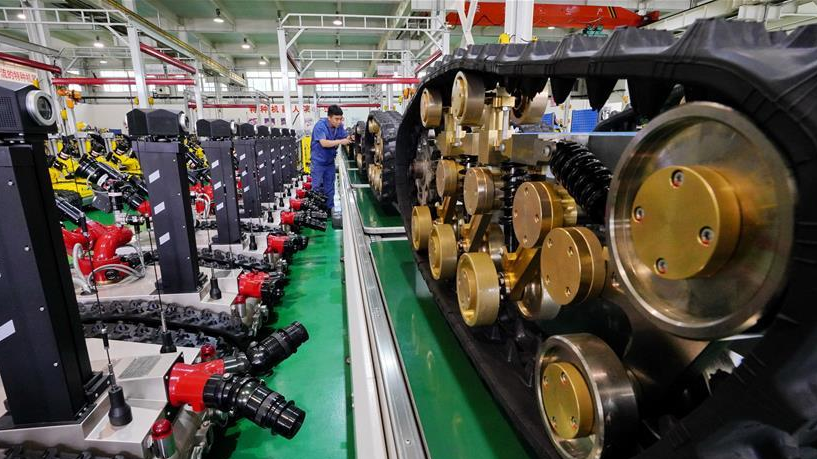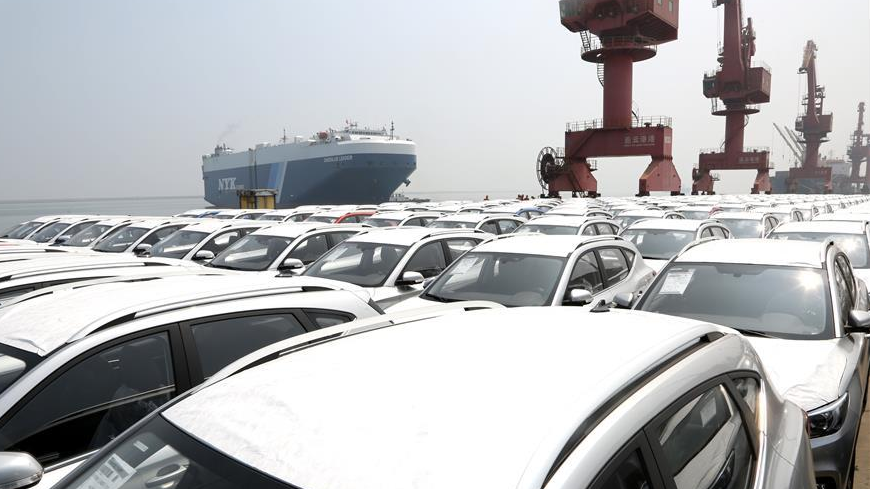
The total value added of China's industrial enterprises above the designated size dropped 1.3 percent year on year in the first half, 7.1 percentage points slower than the decline of the first quarter, testifying a steady recovery of the country's coronavirus-hit industry, said an official with the Ministry of Industry and Information Technology (MIIT) on Thursday.
Industrial value added is used to measure the activity of designated large enterprises with annual turnover of at least 20 million yuan (about 2.9 million U.S. dollars).
In the second quarter, the industrial value added of major enterprises rose 4.4 percent from the year before, showing a positive trend of production and sales, said Vice Minister Xin Guobin.
In June alone, the figure surged 4.8 percent year on year, the largest increase in six months.
During the first two months of the year, the country's industrial value added plunged 13.5 percent year on year due to the severe hit of the COVID-19.
Quick recovery in high-tech and equipment manufacturing
The value added of high-tech manufacturing expanded 4.5 percent year on year, 5.8 percentage points higher than the total industrial value added, said Xin.
Meanwhile, the value added of equipment manufacturing industry in May and June reached 9.5 percent and 9.7 percent, respectively, signifying a quick recovery trend.
Also, auto productions and sales in June surged 22.5 percent and 11.6 percent, respectively, the vice minister added.

Cars made in China wait for shipment at a port in Lianyungang, east China's Jiangsu Province, July 16, 2020. /Xinhua
Cars made in China wait for shipment at a port in Lianyungang, east China's Jiangsu Province, July 16, 2020. /Xinhua
Vitality showed in new forms of industries
With efforts made in terms of the structural reform on the supply-side and the acceleration of industry transformation and upgrading, great vitality has been seen in new forms of industries and businesses during the January-June period.
The output of consumer products that meet the needs of epidemic prevention and control is growing, and key medical supplies are guaranteed in a timely manner.
With the help of epidemic prevention and control, the production capacity in industries such as pharmaceuticals, electronics, and medical instruments and equipment has accelerated, Xin noted.
While the epidemic has caused a major impact on some industries, it has also accelerated the development of industries such as digital economy, smart manufacturing, and health. In June, for example, the output of 3D printing equipment, smart watches, charging piles, and other products increased by over 40 percent, said Xin.
Xin also briefed that the integration of information technology and manufacturing has advanced in the first half of the year. Technological innovation and industrial applications such as artificial intelligence, the Internet of Things, and the Internet of Vehicles have accelerated.
In the first half of the year, the software and information technology service industry achieved a year-on-year growth of 6.7 percent, Xin added.

A billboard of 5G displayed in Hangzhou Xiaoshan International Airport, April 8, 2020, Hangzhou, east China's Zhejiang Province. /VCG
A billboard of 5G displayed in Hangzhou Xiaoshan International Airport, April 8, 2020, Hangzhou, east China's Zhejiang Province. /VCG
5G network construction picking up pace
The construction of the 5G network continued to pick up pace and new infrastructure projects were also well underway.
China has built over 400,000 5G base stations by the end of June, said Wen Ku, a MIIT official. An average of more than 15,000 5G base stations are established per week, he said.
As of now, 197 terminals had been licensed to access the network, and the shipment of 5G mobile phones reached 862.3 million, according to Wen.
The 5G growth has also driven the development of integrated circuits. In the first half of the year, the country produced more than 100 billion integrated circuits, a year-on-year increase of 16.4 percent, said Wen.
(Cover: A worker debugs a special robot at a workshop in the Tangshan Hi-tech Industrial Development Zone in Tangshan, north China's Hebei Province, July 17, 2020. /Xinhua)